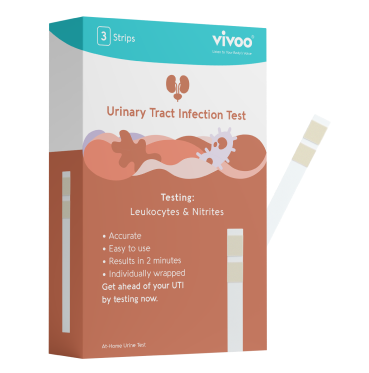Strep throat is a common bacterial infection that causes sore throat, fever, and difficulty swallowing. The underlying cause of this common illness is streptococcus bacteria. It affects individuals of all ages, including children and adults, but it is most prevalent in kids between the ages of 5 and 15. Strep throat is typically treated with antibiotics, but it can be difficult to diagnose without a test.
Sneezing, coughing, sharing eating utensils, and other forms of close contact with someone with strep throat can spread the infection to other people. Strep typically spreads through small respiratory droplets that become airborne when a person with strep throat sneezes or coughs, and it sporadically causes more severe illnesses, like rheumatic fever, a condition that can damage the heart valves. Therefore, it's critical that strep throat be correctly identified and treated. With proper care, strep throat may typically be cured in 10 days.
In this guide, we will take a look at some of the risk factors, and symptoms, how to prevent strep throat and how to check for strep throat at home.
Home Test for Strep Throat
The quick strep test used by doctors and at-home strep testing is relatively comparable. You will softly brush a sterile cotton swab that is provided with them against the back of your throat for one or two seconds.
Reagent solutions are the two substances that are commonly included in these assays. These two substances are combined and a cotton swab is included. Next, the swab is inserted into a mixture of various chemicals that come with the kit. After a few minutes, the swab is placed into a container with the sample, and a specific line will appear indicating the result.
Depending on the line that appeared, the various lines represent the test results, which can be positive or negative for strep throat.
Risk factors for strep
Strep throat is a bacterial infection caused by the Streptococcus bacteria. Anyone can get strep throat, but there are certain risk factors that increase the likelihood of contracting the infection. These include:
- Close contact with a strep throat patient
- Being in congested places like military bases, daycare centers, or schools
- Being in the age range of five and fifteen
- Having a child in school
- Being an adult who often interacts with children, such as a teacher or healthcare worker
Although strep throat can happen at any time of the year, it is more common in the winter and the first few weeks of spring. However, strep throat can not be caused by a common cold.

Symptoms of strep throat
Strep throat is a bacterial infection that affects the throat and tonsils. The symptoms of strep throat can include:
- Throat discomfort that typically develops suddenly
- Swallowing difficulty
- Pain
- The region behind the top of the mouth has little reddish dots
- Neck lymph nodes that are swollen and sore
- Headache
- Rash
- Vomiting and nausea, specifically in younger children
- Body aches
When to see a doctor?
If you or your kid exhibits any of these symptoms, contact your doctor right away:
- The presence of painful, swollen lymph
- Nodes along with a sore throat
- A cough that persists for more than 48 hours
- A pink, thin skin rash that looks like sandpaper and has a temperature
- Breathing issues
- Difficulties swallowing
- A rash and aching throat combined
- A lack of recovery after taking antibiotics for 48 hours when strep has been identified
How to prevent strep throat?
Strep throat is a common bacterial infection that can cause sore throat, fever, and difficulty swallowing. To prevent strep throat, it’s important to:
Wash your hands
The best way to stop any infections is through proper hand washing. Make sure your children know how to properly wash their hands with soap and water or, in the absence of soap and water, use an alcohol-based hand sanitizer. In particular, wash your hands:
- Whenever you spend time with an ill person
- Following a trip to the restroom
- Following a sneeze, cough, or nose blow
Keep hand sanitizer nearby
The best strategy for keeping your hands clean is to always wash them with soap and water. Use hand sanitizer in situations where you don't have access to soap and water. Although it isn't quite as effective, it can still effectively destroy a lot of bacteria if it contains at least 60% alcohol.
When traveling somewhere without restrooms, sinks, or access to clean water, bring hand sanitizer with you. To use it correctly, read and abide by the instructions on the packaging.

Live a lifestyle that can improve the immune system
These may include:
- Eat a well-balanced diet
- Engaging in regular exercise
- Getting plenty of sleep
- Looking for ways to reduce stress whenever you can
- Quitting smoking
- Not drinking alcohol
- In addition to antibiotics, at-home remedies can relieve strep throat symptoms. These treatments consist of:
- Sucking on throat lozenges, or popsicles
- Getting plenty of rest
- Drinking warm beverages, like lemon water or a tea
- Drinking cold beverages to help relieve the throat of soreness
- Turning on a cool-mist humidifier
- Cool-mist humidifier or saline nasal spray
- Increase your vitamin C intake
Medical treatments for strep throat
In addition to the other ways to prevent strep throat, there are medications to treat strep throat, reduce its symptoms, avoid its consequences, and stop it from spreading. They are:
Antibiotics
Antibiotics can eliminate the group A Streptococcus bacteria that cause strep throat. They will solely address bacteria. Unfortunately, they are ineffective against viral sore throats. To get the right medicine and dose, we advise you to talk to your doctor first.
Some of the ways that antibiotics work to treat strep include:
- It relieves a sore throat and other symptoms when strep causes them
- It helps your child get better faster
- It makes it less likely it will be spread to others
- It helps prevent complications such as sinus and tonsil infections, and more serious things such as rheumatic fever














